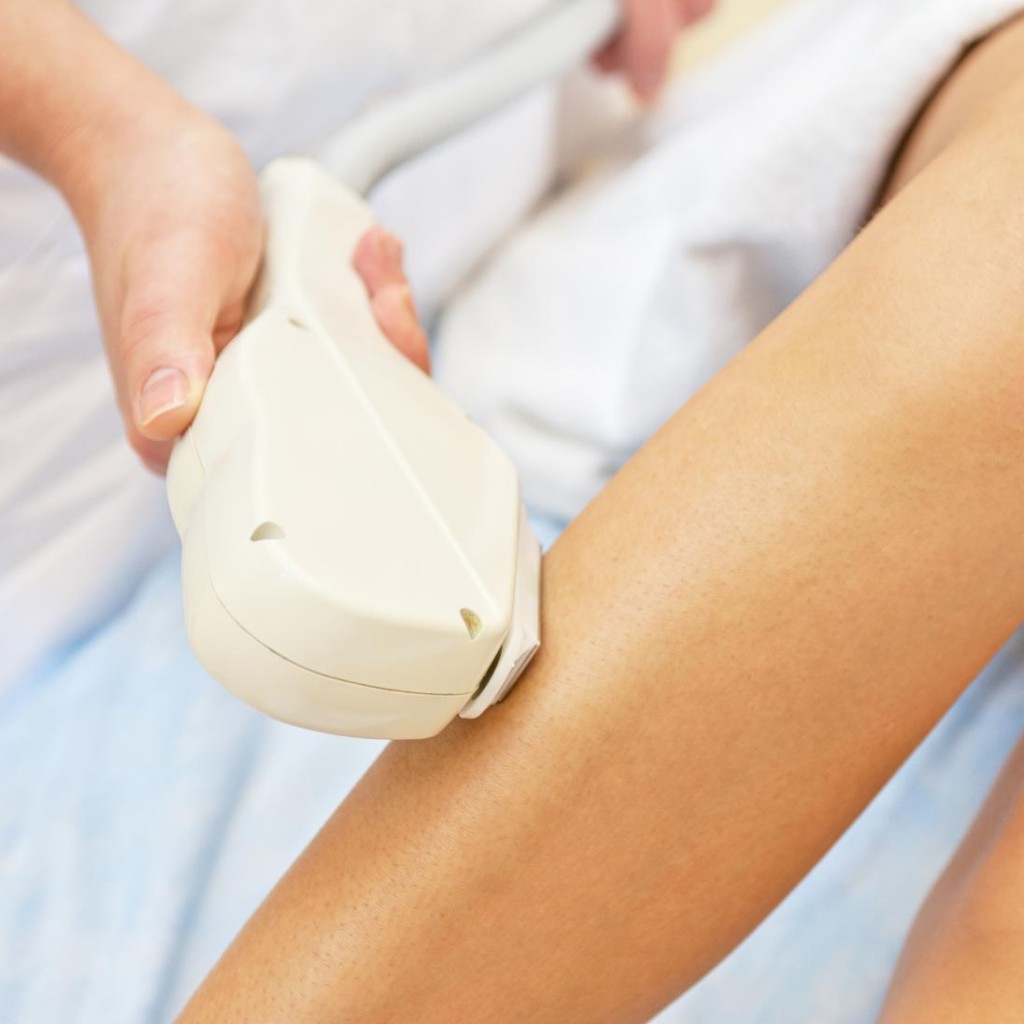
Unwanted hair growth may appear on many areas of the body including upper lip, sideburns, chin, ears, chest, back, armpits (axillae), legs, fingers, feet, or toes and is annoying for both men and women. Lasers help eliminate unwanted hair.
Excessive hair growth is classified as either hypertrichosis or hirsuitism. Hypertrichosis is the presence of excess hair in a normal or abnormal pattern. This may be inherited (genetic), or due to medications, hormones, malnutrition, tumors, or metabolic problems. Hirsuitism is the presence of excess hair in women in a male pattern such as the beard, moustache, or lower abdomen, and may be due to hormonal problems, medications, tumors, or heredity.
There are many ways to remove unwanted hair including, shaving, plucking, electronic tweezers, radio frequency tweezers, waxing depilatories (creams), and electrolysis (inserting a needle into each hair follicle one at a time followed by an electric spark to burn out the follicle.) Most of these methods, however are temporary. A topical cream can be applied to slow hair growth on the face in women, but must be used on a ongoing basis. Lasers offer the only method for permanent hair reduction.
Patients interested in laser hair removal should consult a dermatologist who will make an assessment of:

After the preoperative evaluation, the appropriate laser and treatment setting can be determined. Realistic patient expectations should be discussed including the need for multiple treatment sessions, the potential need for maintenance treatments, and the possibility of variable responses to treatment.
Before treatment, patients are advised to avoid tanning and sunless tanners. Broad-spectrum (UVA/UVB) sun screens with SPF 15 or higher should be used. No plucking, waxing, or electrolysis should be done, although shaving or depilatory creams can be used. The site to be treated may be shaved one to two days prior to treatment. Prophylactic (protective) oral antiviral medication may be started the day prior to treatment to suppress the possibility of developing a herpes simplex infection in the treatment area. An oral antibiotic may be prescribed if the nasal or perianal skin is to be treated.
On the day of treatment, the area should be clean and free of cosmetics. A topical anesthetic cream may be applied prior to treatment. Most lasers have cooling device in the form of a cool gel, refrigerant spray, or water-coolded contact piece that lessens the patient's discomfort. The device should protect the skin from excessive heating as well as the potential of the skin darkening or lightening. Everyone in the room must wear protective eye wear during the laser procedure.

In general, three or more treatments are required at each site to achieve permanent hair growth reduction. In some cases more than five sittings are required. Darker hair responds best to the laser, while lighter hair (white,gray,or red) is less responsive. Topical medications can be used in an effort to increase the receptiveness of lighter hair to the laser treatment.
The laser pulses feel like the snapping of a rubber ban of warm pinpricks against the skin. Ideally, the immediate response is vaporization of the hair shaft. Slight swelling and redness around the hair follicles appear within a few minutes. Ice packs may be applied to the skin following treatment, and over-the-counter pain relief medicine may be taken as needed before and after treatment. If localized blistering once or twice daily until healed. A mild topical steriod and redness. Patients are instructed to avoid sunexposure and to use a broad-spectrum (UVA/UVB) sunscreen with SPF 30 after the laser treatments. Cosmetics may be applied to the treated skin.
Side effects of laser hair removal treatments may include pain, perifollicular edema (swelling) around the hair follicle due to excessive fluid), and erythema (redness and inflammation) lasting one to three days. Blistering, herpes simplex outbreaks, and bacterial infections also can occur. Temporary skin lightening or darkening, especially in darker skin types, or in patients with a recent tan, may be seen. Permanent skin pigment change or scarring is very rare. Loss of freckles or lightening of moles in the treatment area may occur, as well as darknening or lightening of tattoos.
The percentage of hairs removed per session varies in different body locations, with areas of thin skin (for example bikini and armpits) generally showing a better response than areas of thick skin (for example, the back and chin). Approximately 10-25 percent reduction in hair growth can be expected with each treatment. Treatments are repeated every four to eight weeks. The hair that re-grows tends to be lighter and finer in texture.
Laser hair reduction should be performed under the direct supervision of a dermatologist, a physician who specializes in the medical, surgical, and cosmetic treatment of hair and hair diseases, and who is trained to help manage hair and skin problems.